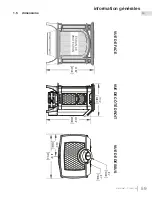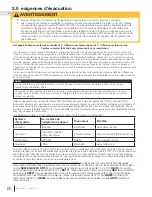
symptom
problem
test solution
Pilot will not light. Makes
noise with no spark at
pilot burner.
Wiring: short, loose, or damaged
connections
(poor fl ame rectifi cation).
-
Verify the thermocouple/sensor is clean and the wiring is undamaged.
-
Verify the interrupter block is not damaged or too tight. Verify
connections from pilot assembly are tight; also verify the connections
are not grounding out to any metal. (Remember, the fl ame carries the
rectifi cation current, not the gas. If fl ame lifts from pilot hood, the circuit
is broken. A wrong orifi ce or too high of an inlet pressure can cause the
pilot fl ame to lift)*. The sensor rod may need cleaning.
No signal from remote with no
pilot ignition.
-
Reprogram receiver code.
-
Replace receiver.
Poor grounding.
-
Verify the valve / pilot assembly are properly grounded
Improper switch wiring.
-
Troubleshoot the system with the simplest
on/off
switch.
Dirty, painted, or damaged pilot
and/or dirty sensor rod.
-
Clean sensor rod with a green Scotch-Brite™ pad to remove any
contamination that may have accumulated. Verify continuity with
multimeter with ohms set at the lowest range.
Pilot sparks but will
not light.
Gas supply.
-
Verify that the incoming gas line ball valve is “open”.
-
Verify that the inlet pressure reading is within acceptable
limits, inlet pressures must not exceed 13” W.C. (32.4mb).
Out of propane gas.
-
Fill the tank.
Pilot supply line may contain
air.
-
Repeat ignition process several times or purge the pilot
supply line.
Incorrect wiring / grounding.
-
Ensure correct polarity of wiring of thermocouple (if
equipped).
-
Verify pilot assembly / valve are properly grounded.
Receiver (if equipped).
-
Reset program: hold reset button on receiver and wait for 2
beeps. Release after second beep. Press small fl ame button
on remote within 20 seconds, you will hear an additional
beep (this signals a successful reset).
-
Replace receiver.
Valve.
-
Check valve and replace if necessary (Do not to overtighten
thermocouple).
Burner continues to
spark and pilot lights
but main burner
does not light.
Short or loose connection in
sensor rod.
-
Verify all connections. Verify the connections from the pilot
assembly are tight. Also, verify these connections are not
grounding out to any metal.
Dirty, painted, or damaged
pilot assembly components.
-
Clean using a green Scotch-Brite™ pad to remove any
contamination that may have accumulated on the sensor
rod, pilot hood, ignitor, or fl ame sensor. Verify continuity with
multimeter with ohms set at the lowest range.
Remote wall switch
is in “
off
” position;
burner comes on.
Wall switch mounted upside
down.
-
Reverse.
Remote wall switch and/or
wire is grounding.
-
Replace.
-
Check for ground (short); repair ground or replace wire.
Faulty wire
-
Replace.
Remote and / or
receiver is not
functioning properly.
Remote controls lights but
no spark or fl ame. (Remote is
locked out).
-
Reset by turning power source off then on.
Receiver or remote has low battery.
-
Replace batteries.
Appliance functions but does not
respond to receiver / remote
-
Ensure appliance is being operated by the same device that turned it
on. Remote controls function if appliance was turned on by remote.
Receiver controls function if appliance was turned on by receiver.
Error with synchronizing.
-
Reset receiver and remote.
Remote too far away from receiver.
-
Refer to “wiring diagram” section.
Wire connector pins are bent.
-
Straighten pins.
Valve wiring is damaged.
-
Replace valve.
If back up batteries are installed, they must also be removed to
re-program
note:
W415-2347 / C / 09.21.20
EN
46
troubleshooting
Summary of Contents for Bayfield GDS25NW-1
Page 49: ...EN W415 2347 C 09 21 20 49 notes...
















































